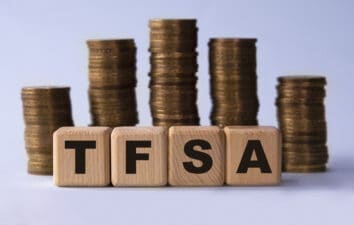Suncor (TSX:SU)(NYSE:SU) just cut its dividend by 55%. Canadian Natural Resources (TSX:CNQ) (NYSE:CNQ), in contrast, surprised analysts by maintaining its dividends when it reported Q1 2020 results.
Let’s take a look at the energy market to see if Suncor or CNRL deserves to be on your buy list right now.
Oil and gas markets
The Canadian energy sector’s multi-year pain got a lot worse in recent months. The arrival of the coronavirus essentially put the global economy on hold, wiping out as much as 30% of demand just as Russia and Saudi Arabia decided to scrap a deal to control supply.
The result saw West Texas Intermediate oil futures plunge to US$20 per barrel and then briefly trade in negative territory. WTI oil is back above $24, but concerns around global storage capacity remain in place.
Western Canadian Select (WCS) oil fell as low as US$5 per barrel in April. The lack of adequate pipeline space to move the country’s oil to international markets is an ongoing issue. While the discount to WTI has narrowed, it doesn’t help most producers who have break-even costs well above the current WCS price of US$21 per barrel.
Smaller oil and gas producers are hanging on for dear life. The walking wounded remain saddled with large debt positions left over from pricey acquisitions at the top of the oil boom. Most slashed or abandoned their dividends long ago.
The Canadian majors with strong balance sheets and diversified operations, however, continued to raise their distributions. Suncor and CNRL stood out as top dividend-growth stocks in the past six years despite ongoing challenges in the energy sector.
Suncor
Suncor’s refining and retail operations provided a nice revenue hedge, but the plunge in demand for fuel is hitting those businesses right now. In the Q1 2020 earnings statement the company cut the dividend from $0.465 per share to $0.21 per share.
Suncor shored up its liquidity position in 2020. The company secured an additional $2.5 billion in credit facilities, giving it $8.1 billion in liquidity as of March 31. Suncor has since added another $300 million in credit lines and raised $1.25 billion through a bond issue.
The dividend cut, in combination with a reduction in operating costs, brings the cash break-even price to cover operating costs down to WTI US$35 per barrel. That’s still nearly 50% above the current oil price.
CNRL
CNRL’s natural gas business is actually enjoying stronger prices than it has seen in a while, providing some support to help offset the hit on the oil production assets. The company finished Q1 with $5 billion in liquidity and adjusted funds flow of $1.3 billion in the first quarter exceeded the capital requirements and dividend payouts.
The diversified nature of the resource base gives CNRL flexibility to move capital to the highest-margin opportunities. The company has long-life and low decline assets with low sustaining capital requirements, which means CNRL enjoys industry-leading breakeven prices.
The board declared a 13% dividend increase in March. The company’s decision to maintain the quarterly payment of $0.425 per share surprised many analysts, especially after Suncor and other majors announced dividend cuts.
However, CNRL feels it is positioned well to ride out the latest downturn. The company’s breakeven is closer to US$30 per barrel and CNRL has flexibility to trim capital expenditures.
Is one a buy?
In regular economic conditions I would pick Suncor due to its diversified business model, but the destruction in jet fuel, gasoline, and diesel fuel demand wipes out the advantage of the downstream assets. Global air travel won’t start to ramp up again until 2021. Airlines say it could be three years before they get back to 2019 capacity.
Natural gas is holding up well and CNRL has a low breakeven point to cover operating costs. If you are searching for an oil and gas stock to play a potential 2021 rebound, I would make CNRL the first choice today.








